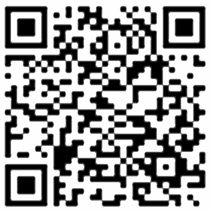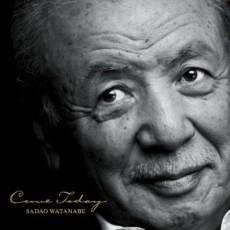
Daily Dose Of Jazz…
Sadao Watanabe was born on February 1, 1933 in Utsunomiya, Japan and first began learning music at the age of 18. He started performing professionally in 1953. By 1958 he had established himself as a world-class saxophonist having performed with leading musicians and quartets. In 1962 he left Japan to study at Berklee College of Music in Boston.
Known for his bossa nova recordings, Sadao’s work encompasses a large range of styles with collaborations from musicians all over the world. Of his 72 albums to date, he has had 13 albums reach the top 50 Billboard charts and two within the Top 10. He has also had numerous albums reach number one on the jazz charts.
Watanabe has been awarded the Order of the Rising Sun – the imperial medal of honor, the Fumio Nanri Award, and an honorary Doctorate Degree from Berklee College of Music.
In addition to his musical career, alto and soprano saxophonist and flutist Sadao Watanabe is also a published photographer with six books to his credit in Japan. He is also a U.S. citizen sharing his time between his homeland and Los Angeles, California as he continues to perform, record and tour.
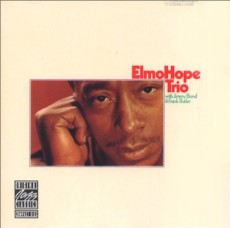
Daily Dose Of Jazz…
Jimmy Bond was born on January 27, 1933 in Philadelphia Pennsylvania. He started playing bass in junior high school in Philadelphia. While only so much interest can be generated with accounts of a player’s high school days, in this case the details include jamming with the likes of Gene Ammons and Charlie Parker.
Starting in the summer of 1955, the bassist was working with the extremely popular trumpeter and vocalist Chet Baker, a connection that resulted in dozens of record releases. He went on to backup Ella Fitzgerald from 1956 to 1957, but in the ’60s he began to break away from what had seemed to be his genre of choice.
The Bond studio recordings of the ’60s and ’70s involved sessions with Randy Newman, the Jazz Crusaders, Phil Spector and Fred Neil among others. As one of a few studio players who shunned the electric bass and his studio involvements included stints with Tim Buckley, Frank Zappa and Lightnin’ Hopkins as well as Jimmy Witherspoon and Nina Simone.
Adolescent boys couldn’t help noticing the name of this dependable bassist in the wake of James Bond becoming a superhero in the ’60s. When he attended a conference, it was no doubt to get a recording session started. The talk would have been about what key a song is in or how quickly it should move, hardly the stuff of international intrigue. But the main reason these aforementioned lads were noticing the Bond name in the first place was because this was a bassist who shifted his talents from the jazz bandstand to the recording studio, perhaps out of necessity but with great skill and subtlety nonetheless.
More Posts: bass

Daily Dose Of Jazz…
Chet Baker was born Chesney Henry Baker, Jr. on December 23, 1929 in Yale, Oklahoma. Raised in the musical household of a professional guitar player, he began his musical career singing in church, and then introduced to the trombone, but proved to large it was replaced with the trumpet.
Baker received some musical education at Glendale Junior High School, but left school at age 16 in 1946 to join the Army, serving in the 298th Army band. After his discharge in 1948, he studied theory and harmony at El Camino College in Los Angeles, dropped out in his second year and re-enlisting joined the army band at the Presidio but was soon spending time in San Francisco jazz clubs such as Bop City and the Black Hawk. Once again discharged he pursued his career as a professional musician.
Chet’s earliest notable professional gigs were with saxophonist Vido Musso band and with Stan but earned much more renown in 1951 when Charlie Parker chose him to play a series of West Coast engagements. In 1952, Baker joined the Gerry Mulligan Quartet, which was an instant phenomenon due to contrapuntal touches.
With Mulligan serving a sentence on drug charges, Pacific Jazz picked up Baker in 1956 releasing Chet Baker Sings to the consternation of purists, but it increased his profile. He would go on to perform and record with Russ Freeman, Carson Smith, Joe Mondragon, Jimmy Bond, Art Pepper and Shelley Manne among others, win the Downbeat Jazz Poll, make his acting debut in Hell’s Horizon, front his own combos, and become an icon in the West Coast cool jazz movement.
However successful Baker became his lifelong battle with heroin brought a decline to his musical career, pawning instruments, serving prison sentences, encountering expulsion and deportation from European countries, savagely beaten and losing his teeth and ability to play. Chet’s comeback came with being fitted with dentures, relocating to New York and Europe, playing with Philip Catherine, Phil Markowitz, Stan Getz and returning with his most prolific recording era between 1978 and 1988, though on mostly small European labels that never reached wide audience attention.
Chet Baker, composer, flugelhornist and trumpeter who popularity was due in part to his matinee-idol good looks and well publicized drug habit, and who was associated most prominently with his rendition of My Funny Valentine and his documentary Let’s Get Lost, passed away on May 13, 1988 in Amsterdam, Netherlands.
More Posts: flugelhorn,trumpet,vocal
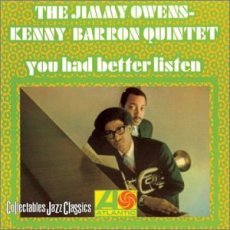
Daily Dose Of Jazz…
Jimmy Owens was born December 9, 1943 in New York City. In the 1960s, he was a member of the hybrid classical and rock band Ars Nova, and then became a member of the New York Jazz Sextet playing with at times were Sir Roland Hanna, Ron Carter, Billy Cobham, Benny Golson, Hubert Laws, and Tom McIntosh.
Between 1969 and 1972, Jimmy was a sideman on the David Frost Show under musical director Dr. Billy Taylor. During this stint he played alongside Frank Wess, Seldon Powell Barry Galbraith and Bob Cranshaw.
As an educator Jimmy is an active member of the jazz education community, sitting on the board of the Jazz Foundation of America and the Jazz Musicians’ Emergency Fund to help individual musicians.
Over the course of his career the trumpeter, composer, arranger, lecturer and music education consultant has performed and recorded as a leader and sideman with Lionel Hampton, Charles Mingus, Archie Shepp, Joe Zawinul, Gerald Wilson, Duke Ellington, Hank Crawford, Dizzy Gillespie, Count Basie and Herbie Mann among many others. Since 1969, he has led his own group, Jimmy Owens Plus.
More Posts: flugelhorn,trumpet
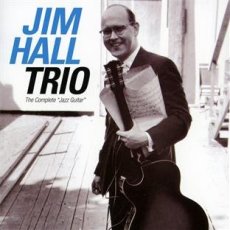
Daily Dose Of Jazz…
Jim Hall was born James Stanley Hall on December 4, 1930 in Buffalo, New York. Learning to play guitar as a child, he was educated at the Cleveland Institute of Music. After his matriculation he moved to Los Angeles, California and began to attract national then international attention in the late 50s. It was during this period that he further studied classical guitar with Vincente Gomez.
Hall would play with the Chico Hamilton Quintet and Jimmy Guiffre in the Fifties, Ella Fitzgerald in the early 60s, then played with Ben Webster, Hampton Hawes, Bob Brookmeyer, John Lewis, Zoot Sims, and Lee Konitz, among others. A move to New York led him to work with Sonny Rollins and Art Farmer and his live and recorded collaborations there with Bill Evans, Paul Desmond and Ron Carter have become legendary.
Formal recognition as a composer came in 1997, when Jim won the New York Jazz Critics Circle Award for Best Jazz Composer/Arranger. His pieces for string, brass, and vocal ensembles can be heard on his “Textures and By Arrangement” recordings. He has been commissioned to compose for guitar and orchestra, awarded an NEA Jazz Masters Fellowship, was one of the first musicians to join the fan-funded label ArtistShare.
Hall changed the way jazz guitar sounded, with his innovation, composition, and improvisation. Apart from Metheny, he influenced other contemporary artists such as Bill Frisell, Mick Goodrick, John Scofield, and John Abercrombie. He continued to perform, tour and record up until he passed away in his sleep on December 10, 2013 in his Manhattan apartment.
More Posts: guitar


